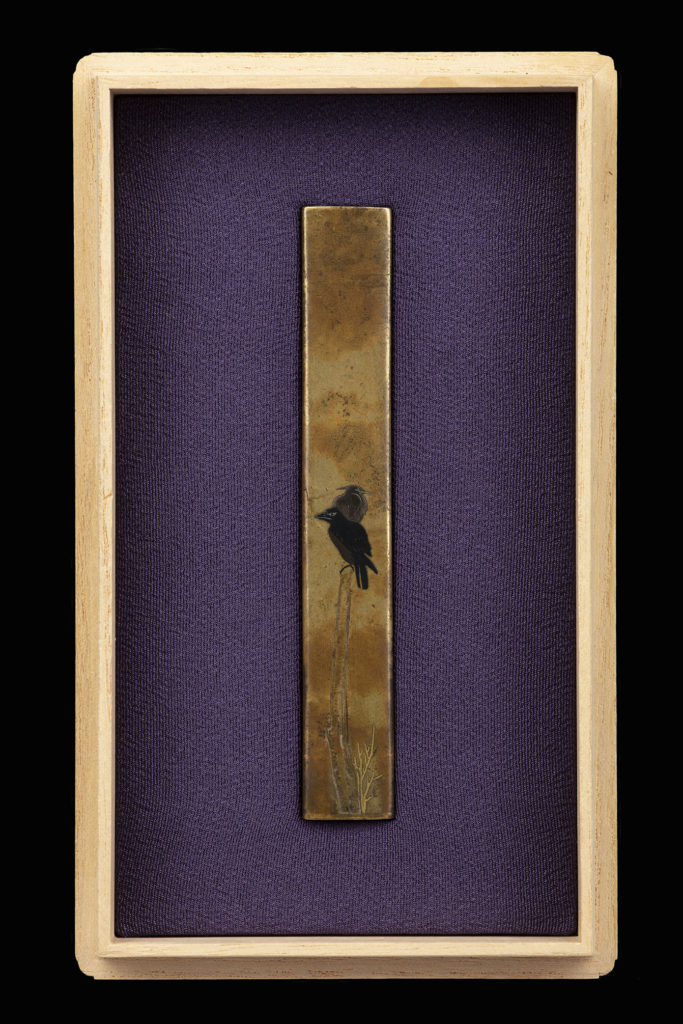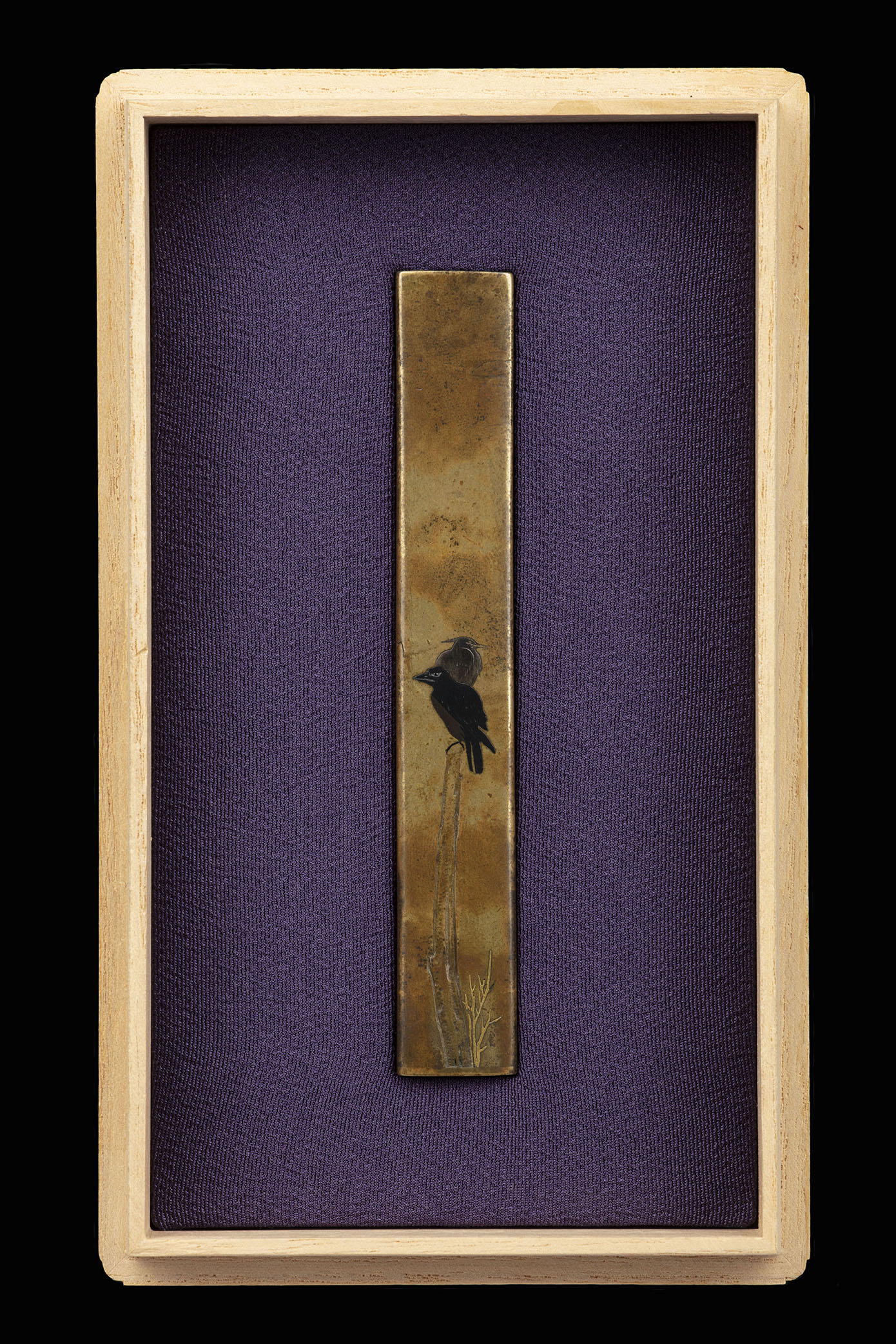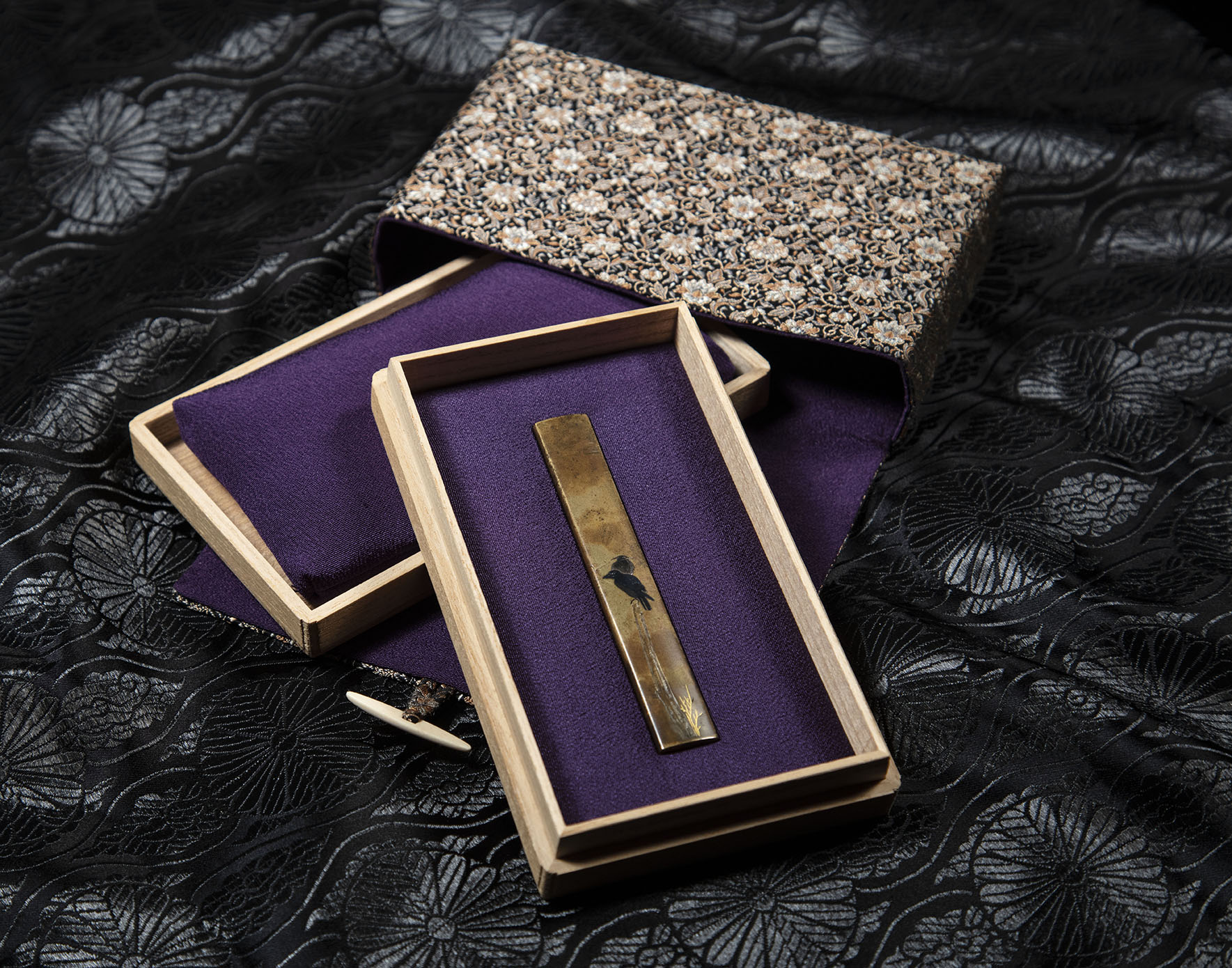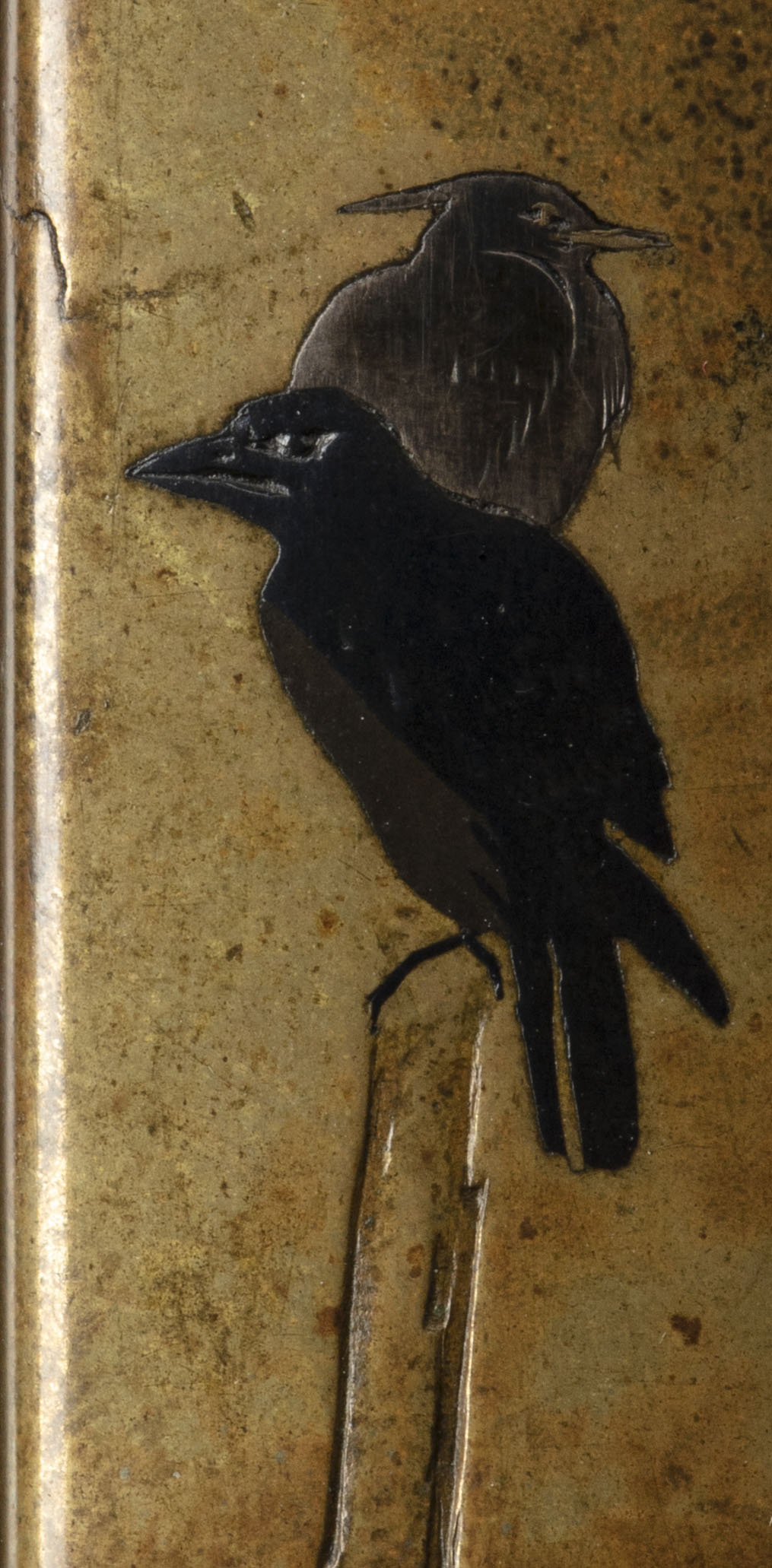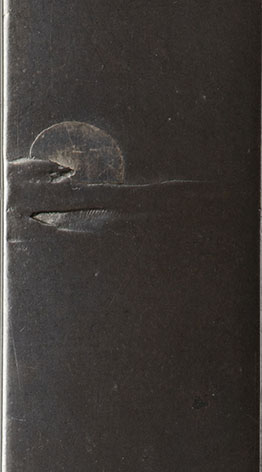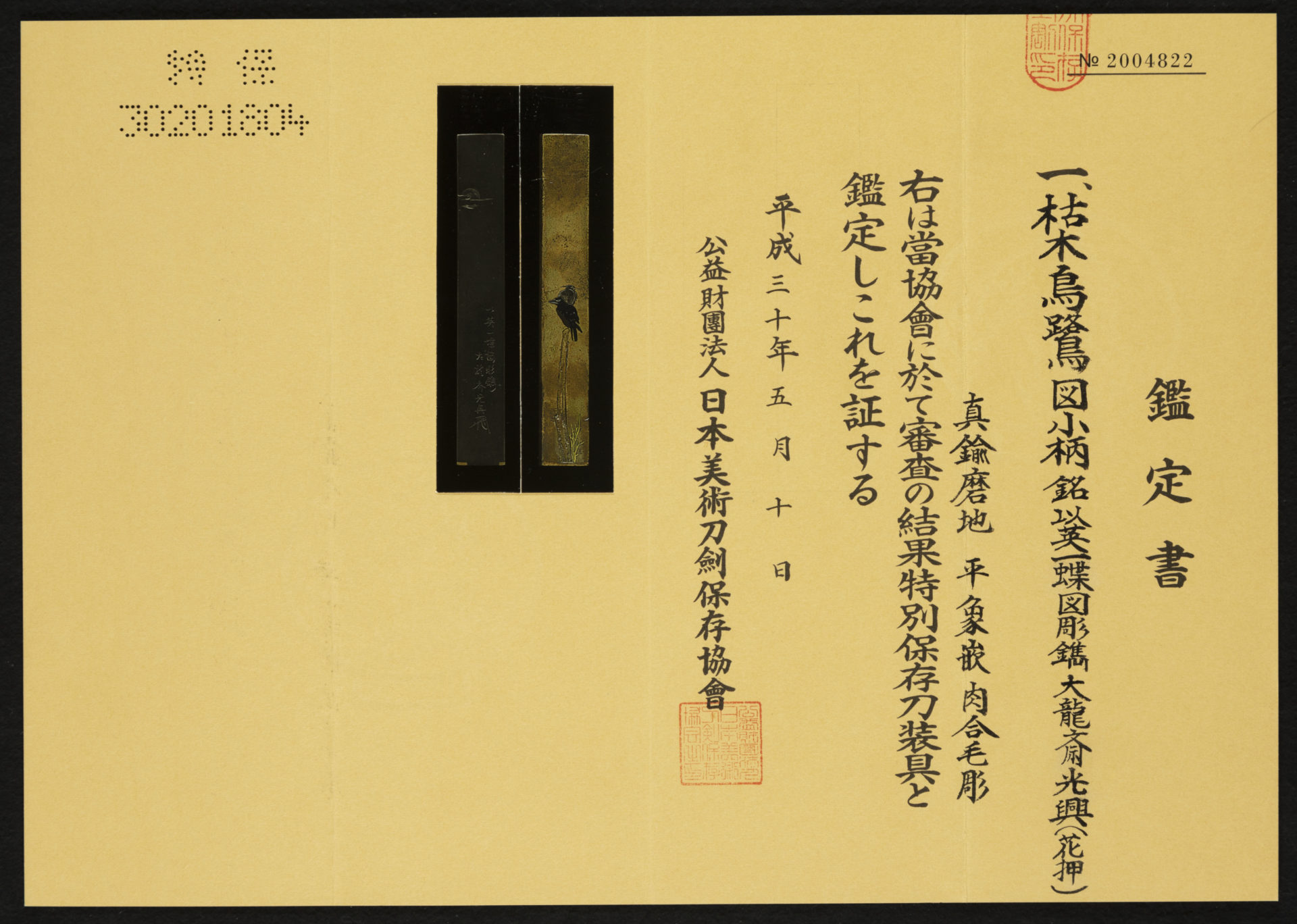Kozuka by Otsuki Master Mitsuoki
Otsuki Mitsuoki (1766-1834) was the fourth generation of the Otsuki school from the founder, Otsuki Korin, and stands as one of the most highly regarded fittings makers of all time. He is ranked in the Kinko Meikan as “Meiko” (Great Master) alongside mutually regarded peer geniuses such as Goto Teijo, Hamano Shozui, Ishiguro Masatsune, Iwamoto Konkan, Omori Eishu (aka: Teruhide), Tanaka Kiyotoshi, Tsu Jinpo, Unno Shomin, and several other Meiko masters who produced sublime and incredible works.
Otsuki (大月) means “great moon”, and it was under Mitsuoki’s reign as master of the school that it was propelled into luminary greatness. The admiration for his work places him in the company of other great Kyoto kinko masters; Ichinomiya Nagatsune and Tetsugendo Shoraku. Furthermore, by some accounts, his work is regarded as the best to have come from all Kyoto fittings craftsmen.
There is an excellent detailed history of Otsuki Mitsuoki and description of a tsuba also in brass here.
This wonderful kozuka combines hirazogan (flat inlays) with katakiribori (incised lines resembling ink brush painting) on a brass plate that is the style he gravitated to toward the middle of his life after his studies with painters Kishi Ganku (founder of the Kishi painting school), and Nakazawa Rosetsu of the Maruyama painting school. The influence their teachings, as well as the inspirations he drew from paintings at large, is clearly evident in his compositions and execution of the work he performed from about the middle, to the end of his life.
The subject of the crow and magpie perched on a withered branch is serene but has an element of intrigue and tension to it. In paintings and woodblock prints, crows (or ravens, take your pick) are often illustrated against either the sun, or the moon. Yet more influence from Mitsuoki’s study of classical painting. The birds are expressed on the contrast with the crow in black and the heron in greyish silver perched in the sunlit day of a warm yellow brass plate.
On the reverse, however, is the inky grey darkness of night with a silver moon shrouded in clouds, hanging in the sky of the upper left of the plate. Illustrations on the back of a kozuka are uncommon and when present, aren’t just random executions. They are part of the theme, continue a story, or elaborate on wordplay, and this is clearly Mitsuoki’s brilliance in play. Mitsuoki seems to have purposely refrained from using the kanji for “Otsuki” in his signatures even after assuming leadership of the school at about age 50. Instead, he produced a variety of other titles such as “Dairyusai” as seen on this example. However, he conspicuously states his lineage and school of “Otsuki” with the moon placed hanging in the sky above his signature as a dynamic illustration rather than just kanji in the mei. This full moon image also imparts unity and balance of the back in nighttime, and the front in daytime. Two birds in opposition, two sides in opposition, and the balance between both unified to complete a whole that is greater than its sum of parts. Genius….
The right most portion says that the engraving was done by means of a picture by Hanabusa Itcho (1652-1724), who was a student at the Kano school of Painting in Kyoto and studied poetry under the famous Matsuo Basho. While I could not find an exact example of a painting by Hanabusa with a crow and a heron, there is an example of a painting with remarkably similar composition in the Kyoto National Museum. That painting shows what is described as a “magpie” perched on a plum branch and is compositionally very similar to the bird behind the crow on this kozuka which is specifically described in the NBTHK paper as a heron. The Japanese name for magpie and heron are similar; “kasasagi” and “sagi”. However, Kasasagi is also the name of a Samurai family from the Nara region, not far from Kyoto. So, it’s quite possible that the illustration on this kozuka employs some of the wordplay that Mitsuoki seems to have enjoyed so much in his works, and this piece was a custom order or gift for a member of the Kasasagi family. Symbolism and wordplay expressed thematically are ubiquitous in Japanese sword fittings, and the implications and meanings often expand into multiple meanings depending on the contexts. I am confident that there are such meanings in this piece yet to be defined, and research is still ongoing so this page will be updated as new information is found.
It is housed in a custom box with fabric shifuku cover and holds NBTHK Tokubetsu Hozon certificate attesting to its quality, condition, and authenticity. It would be an excellent addition to any collection and provide many years of enjoyment and admiration.
SOLD
